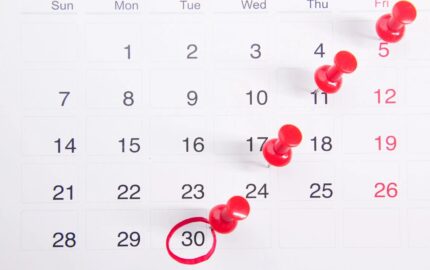For more than four years, Gangrey.com has rounded up the best print narratives on a daily basis. Founder Ben Montgomery, who is also a reporter with Florida’s St. Petersburg Times, talks here about his personal motivation for starting his site and what he thinks narrative journalism can do.
Why did you start Gangrey?
I used to keep a big, growing clip file of stuff that I liked to read. I found myself at times on deadline trying to quickly switch from reporting to writing, and searching for new stories that would get me there. Sometimes I’d dabble around the Pulitzer site, but after a while I found I’d read everything on there. I’d get on Nexis and search for early '90s material from Rick Bragg.
I thought, “If I’m doing this, there must be other people who are doing the same thing.” So I thought that maybe it would be a service for other people if I started collecting new stuff every day in one place in a simple, streamlined blog. If it didn’t help anybody else, I thought it would be a resource for me—it would be my digital clip file. And I found pretty quickly that there were a number of other people who wanted to go there, too.
The idea is the same: a daily inventory of good journalism. But it’s also become more of an online community, a place where we can criticize each other’s work and make each other better—argue about things and learn from new pieces of journalism.
It’s also become a place to showcase new writers. That’s sort of rare. I got an email from Wes Ferguson the other day, asking if I’d take a look at what he’s done. He’s at this little paper in Texas, and it turns out he’s a fantastic writer.
So maybe in a small way, I can also introduce people to new writers’ work.
What makes a good Gangrey story?
Maybe a little bit of what Tom Shroder was talking about. I don’t want to be bored. It might be as simple as that. There’s no set of things that I’m looking for. Does it have something that’s surprising? Is it entertaining? Will it keep my attention? Is there some device being used that I’ve never seen before?
Do you get any payment for Gangrey, or is it a labor of love?
No [he laughs], no payment. I added a little amazon.com bookstore to the site, hoping maybe referrals to people buying the books would generate some income. I have yet to receive a dime. I sold some t-shirts a while back, thinking the same thing. I sold out my stock, but I’m not even sure I made any profit.
How do you find the stories you highlight?
I’ve got a decent network of people that has developed. They’re just serious readers and know what to look for or what makes a good story. They supply a pretty good stream of new stories. Beyond that I have a pretty insatiable reading appetite. I’m reading all the time. Even while I’m working, I find stories I’ll go back to read later. I’ve also invited some people to post.
Who else is involved? I’ve seen Tom Lake post, I think.
Yes, Tom, and also Michael Kruse, who works at the St. Petersburg Times, though he hasn’t posted for a while.
Your tagline is “prolonging the slow death of newspapers.”Do you think print narratives have a future?
Absolutely. I kind of like the pessimism in that tagline, because that’s who I am. But I think we’ll be doing print narratives forever. They did them on the cave walls, right? They’re not going anywhere.
In your Marianna story about abuse in a boys’ home, you had some interesting multimedia components that really added to the whole project. How do you feel about the shift toward multimedia narratives?
I love it, and I love that video we did. That didn’t require a lot from me. Much of it came from the photographer Edmund Fountain shooting over my shoulder while I did interviews. I couldn’t have pulled that off if it had required more effort from me. We wouldn’t have achieved the same level of—I don’t want to say excellence—the same level of story for either of those things, if both of them had required my attention.
If journalists are required to write the story and compose the multimedia elements going into it, both parts tend to suffer. It was my job from the beginning to do my thing for the story, while Edmund worried about the multimedia.
When it came time to create it, we had a meeting. We outlined the story on the giant pieces of paper. And then we met with Edmund and storyboarded the video, asking ourselves, “How can we make it different?” I think it complements the story. I think the story is the more important element there, but I’m totally in favor of good multimedia.
I see you’ve followed up that Marianna story with more installments. The project itself was a beautiful complete narrative. What do you hope to accomplish with more stories?
This ongoing thing wasn’t the idea at first, but we kind of decided we’d call it part two when it became clear that it would be part two. I’ve written probably eight stories total on this, about 17,000 words. When we’re writing about the stuff that happened in the 1950s and ’60s, the constant question we got was, “What’s this place like today?” Or, people would say, “It’s a good thing it’s closed.” And we’d say, “No, it’s not closed.” And they’d come back with, “Well, what’s it like?” It’s a natural question. So we delivered part two. And there are going to be a couple more that we’ll work on.
I view this whole year-long project—all 10 stories, or whatever it ends up being—as one big narrative. I have written some news leads for a couple of the pieces, but I think they all have a consistent tone and point of view. And hopefully, if someone ever considers the body of work, it will be clear that this thing happened, and then this part came here. I hope there’s a consistency in the voice.
What do you see as the role of narrative journalism—to tell good stories, to cause some kind of change, or something else altogether?
I got an email from a guy who used to be an editor at the Times a while back—Martin Dyckman. He wrote and said, “I’m glad to see the Times is still crusading.” It feels good to know you’re crusading on the side of social justice.
Had we approached this with the idea of writing a bunch of inverted pyramid stories off of this news event, there’s no way we could have kept readers’ attention. The evidence is in the letters to the editor, and the phone calls, and the comments. We wouldn’t have achieved this response if we hadn’t told the stories. Also, I think you confuse people if you don’t give them a chronological account of the evolution of this place.
What should good narrative journalism do?
At its best, it grabs you by the shirt collar and brings you from your kitchen table in St. Petersburg to a cell at the Florida School for Boys, so that you can witness an atrocity. And then hopefully when it returns you to your table in St. Petersburg and you read the last line, you put the paper down and say, “Damn, I’m glad I went on that journey with this reporter.”
 On what makes a good Gangrey story:
On what makes a good Gangrey story:


